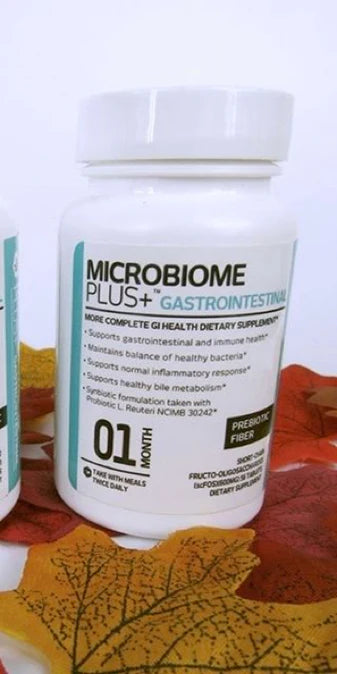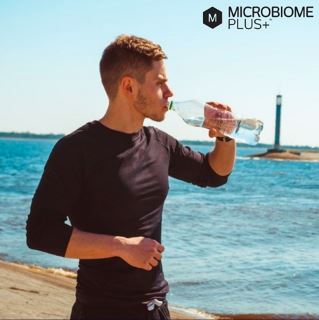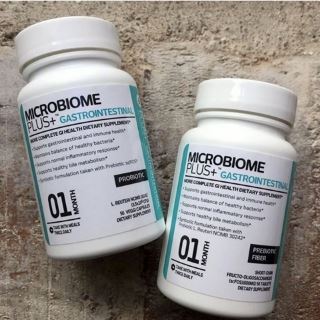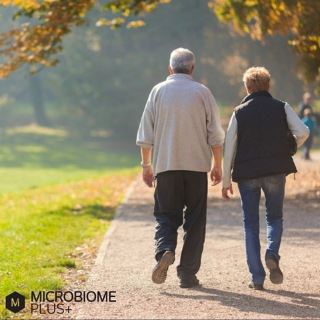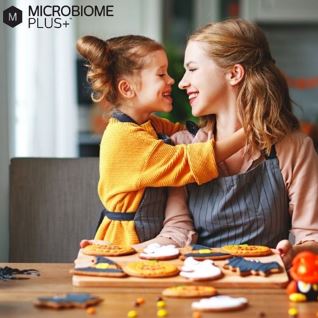Overview
According to a scientific report of 2015, about 46% of the adult U.S. population has some form of tooth disease. This percentage increases with age, affecting about 70% of adults aged 65 years and older. [1]
Just like our gut, our mouth is also home to over 700 good and bad bacterial species, collectively termed as the oral microbiome. A microbial shift in the oral cavity (mouth) from an overload of good bacteria to an excess of bad bugs can trigger a multitude of dental diseases, including but not limited to:
- Dental plaque and tartar build-up
- Caries or tooth decay
- Inflammation of the gums and/or around the tooth
- Bad breath
- Mouth cancer
The dental diseases, in turn, can pave a way to several non-dental diseases such as:
- Cardiovascular disease ̶ including inflammation of the inner lining of the heart [2] [3]
- Diabetes [2] [3]
- Alzheimer’s disease [4]
- Negative impact during pregnancy such as premature labor [2]
- Chronic lung disease or lung infection [5]
Where a good oral hygiene and treatments like fluoride prevent gum and tooth diseases, mounting evidence shows that probiotics or healthy, live microorganisms also boost oral health.
How do Probiotics help Restore Oral Health?
Probiotics can Colonize the Biofilms
The bad bacteria tend to stick to the surface of the teeth by releasing a sticky, sugary substance that makes up the biofilm or dental plaque. If your oral hygiene is poor, the plaque can harden into tartar, which will be visible as a yellow, brown, or black build-up on the teeth. It is not possible to remove the tartar with brushing and flossing and without a dental visit, it will eventually end up in gum inflammation and disease.
Probiotics can help replace the biofilm of unhealthy bugs with the good ones. This property enables them to resist acidic conditions that can otherwise promote the build-up of tartar on the teeth and tooth decay. The lactobacilli species deserve special mention here as they have been found to penetrate the biofilms swarmed with disease-causing bacteria. Once there, they compete with the bad bugs to sustain inside the biofilm. [6] [7] [8]
Probiotics can fight Gum Inflammation and Bleeding
The gums have pockets, which contain a special liquid called gingival crevicular fluid. When your gums are inflamed, this fluid becomes occupied with inflammation-promoting cytokines. Probiotic chewing gum containing L. reuteri appear to lower the levels of these inflammation-promoting substances [9] and minimize gum inflammation.
In a study where 59 individuals with gum inflammation and bleeding received the probiotic, L. reuteri for 14 days, showed a significant reduction in the severity of gum inflammation and plaque. [10]
Probiotics can Boost Immune Responses
An imbalanced oral microbiome and an increased probing depth/s of tooth/teeth is a target for dental and periodontal diseases. Our gums then become susceptible to infection by a bad bacterium called P. gingivalis. This nasty bug makes things worse by lowering the levels of a protective cytokine, known as IL-12, an important component of the immune system. [11]
A friendly probiotic called Lactobacillus plantarum has the guts to neutralize the disease-advancing effects of P. gingivalis. When killed by heat, this probiotic drives the production of the protective IL-12, which, in turn, reduces the probing depth of a tooth and its vulnerability to become infected. [12]
References
- Eke PI, Dye BA, Wei L, et al. Update on Prevalence of Periodontitis in Adults in the United States: NHANES 2009 – 2012. Journal of periodontology. 2015;86(5):611-622. doi:10.1902/jop.2015.140520.
- Sampaio-Maia B, Caldas IM, Pereira ML et al. The Oral Microbiome in Health and Its Implication in Oral and Systemic Diseases. Adv Appl Microbiol. 2016;97:171-210. doi: 10.1016/bs.aambs.2016.08.002.
- Shay K. Infectious complications of dental and periodontal diseases in the elderly population. Clin Infect Dis. 2002 May 1;34(9):1215-23.
- Kamer AR, Pirraglia E, Tsui W, et al. Periodontal disease associates with higher brain amyloid load in normal elderly. Neurobiology of aging. 2015;36(2):627-633. doi:10.1016/j.neurobiolaging.2014.10.038.
- Zeng X-T, Tu M-L, Liu D-Y, Zheng D, Zhang J, Leng W. Periodontal Disease and Risk of Chronic Obstructive Pulmonary Disease: A Meta-Analysis of Observational Studies. Rogers LK, ed. PLoS ONE. 2012;7(10):e46508. doi:10.1371/journal.pone.0046508.
- Nath SG, Raveendran R. Microbial dysbiosis in periodontitis. Journal of Indian Society of Periodontology. 2013;17(4):543-545. doi:10.4103/0972-124X.118334.
- Salas-Jara MJ, Ilabaca A, Vega M, García A. Biofilm Forming Lactobacillus: New Challenges for the Development of Probiotics. Kitazawa H, Villena J, eds. Microorganisms. 2016;4(3):35. doi:10.3390/microorganisms4030035.
- Haukioja A. Probiotics and Oral Health. European Journal of Dentistry. 2010;4(3):348-355.
- Twetman S, Derawi B, Keller M et al. Short-term effect of chewing gums containing probiotic Lactobacillus reuteri on the levels of inflammatory mediators in gingival crevicular fluid. Acta Odontol Scand. 2009;67(1):19-24. doi: 10.1080/00016350802516170.
- Krasse P, Carlsson B, Dahl C et al. Decreased gum bleeding and reduced gingivitis by the probiotic Lactobacillus reuteri. Swed Dent J. 2006;30(2):55-60.
- How KY, Song KP, Chan KG. Porphyromonas gingivalis: An Overview of Periodontopathic Pathogen below the Gum Line. Frontiers in Microbiology. 2016;7:53. doi:10.3389/fmicb.2016.00053.
- Iwasaki K, Maeda K, Hidaka K et al. Daily Intake of Heat-killed Lactobacillus plantarum L-137 Decreases the Probing Depth in Patients Undergoing Supportive Periodontal Therapy. Oral Health Prev Dent. 2016;14(3):207-14. doi: 10.3290/j.ohpd.a36099.


